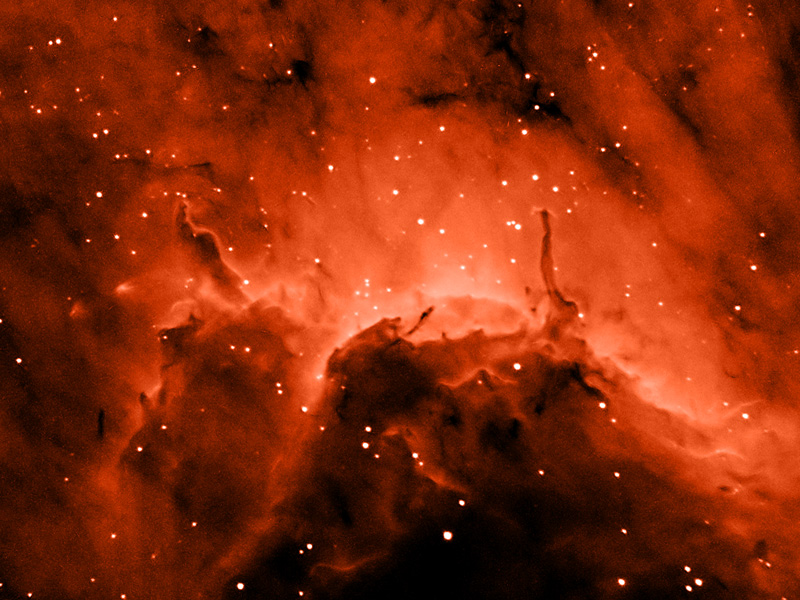The Pelican Nebula, lies about 1800 light years away near the constellation Cygnus, and is about about 30 light years across. Radiation from young energetic stars is transforming the Pelican's cold gas to hot gas, and the hot ionized gas glows in the deep red hydrogen-alpha (Hα) wavelength. Monochrome imaging through an Hα filter emphasizes the intricate details in the gas.
This photograph captures a small area known as IC5067 in the pelican's "neck." The area is outlined here.
To me, this looks like a volcano spewing fire, lava, and gas into the night; hence the title, "Hydrogen Volcano." I added the color in Photoshop.

| Exposure | Hα 2.5 hours (10 x 15 min.) binned 1x1 (2 @ -15°C, 8 @ -10°C) |
| Processing |
Dark and flat processing in CCDSoft Sigma-reject combine Levels and curves, Neat Image, highpass filter in Photoshop CS Color-fill layer in Photoshop CS6 |
| Date and Location |
June 24, 2005
Montpelier, Virginia, USA |
|
Equipment |
Celestron 9¼" at f/5.6 on a Celestron CGE equatorial mount SBIG ST-8XM camera Optec IFW filter wheel with Astrodon TruBalance filters Optec TCF-S focuser Optec Pyxis camera rotator Guide scope: 60mm f/5 refractor and ST-402 camera Imaging and autoguiding with MaxIm DL 4.07 |
Updated May 23, 2023